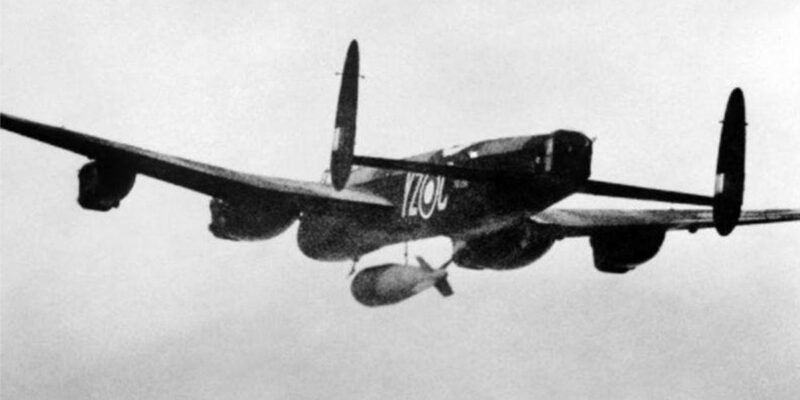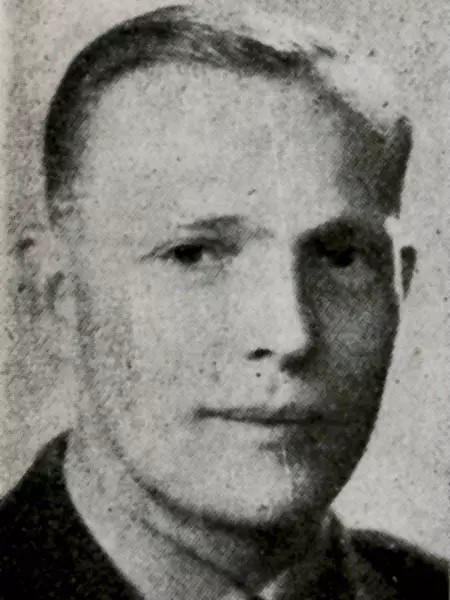Operations
Operations
The 10-Ton Grand Slam
By John Gumbley
Britain’s aviation bomb development culminated in the Grand Slam – the largest non-nuclear air-dropped weapon of WWII. So large was the Grand Slam it could only be carried by specially modified Lancasters that required skilled crews both to fly the aircraft and bomb with precision. Once again the task fell to 617 Squadron.

617 Sqn Lancaster B1 Special PB996 ‘YZ-C’ releases a 22,0000lb ‘Grand Slam’
over the Arnsberg Viaduct, Germany, on 19th March 1945.
(Credit: Royal Air Force).
Originally known as the Tallboy Large, the Grand Slam bomb was the biggest non-nuclear air-dropped weapon of war, representing the culmination of Barnes Wallis’ work on bomb design. The Grand Slam was designed to destroy viaducts, submarine pens, V-2 rocket sites and railway choke points that its predecessor, the Tallboy bomb could not sufficiently destroy except by undermining.
By December 1944, 10-ton bomb casings were finally being produced in both America and Britain. The bombs were 25feet 6inches long (the Tallboy measured 21ft), with a maximum diameter of 3ft 10ins and a total weight of 22,400lbs (10,000kg) – the Tallboy weighed 12,000lbs. They were generally equipped with 11-second delays.
At the same time, thirty-two B1 Special Lancasters were ordered to carry the Grand Slam bombs, with these to be built in January 1945. By Febuary two were ready for testing but a bewildering number of rip-outs and modifications were undertaken with each item carefully weighed. Out went the front and mid-upper turrets, H2S radar, R/T set, electric lighting, flare chutes, flame dampers, some fuel tanks, rear gunners armour plate, three fire axes, a tool kit and crew ladder. Bomb doors were removed to house the bomb. The armour plate was taken out of the pilot’s seat and even the navigator’s alloy chair was replaced with a cane chair.
The modifications meant that the Lancasters no longer needed a mid-upper gunner or wireless operator. They would now fly with a five-man crew. After all this, with 5,120lbs of fuel on board, with “not even an extra 100 gallons for the gremlins”, each B1 Special weighed 39,765lbs. The maximum all up weight was to be no more than 72,000lbs, with a landing weight of no more than 60,000lbs.
Many airfield modifications were also required, including for transporting and loading the bombs before the first Grand Slam arrived at Woodhill Spa on 20th January 1945.
Flying with a Grand Slam on-board was quite an experience. Take off was described as a “slow waddle” to eventually being airborne at the end of the runway and gaining 1,000ft at the coast to reach 6,000ft by the enemy coastline. The warning was to not drop the bomb below 14,000 ft “or you’ll get shock waves” but crews often struggled to attain a height of more than 12,000ft.
On the ground a Lancaster has no perceptible dihedral, but the bomb weight caused the wings to lift in an arc. On release of the bomb the aircraft “leapt 500ft”. B1 Specials were known as “clapper aircraft” because on release of the bomb the Lancaster went like the clappers!
Crews were told that Grand Slams were not to be wasted – no jettisoning over the North Sea! They were too valuable and rare. Landing the Lancaster with the Grand Slam on board came with the warning that a drop of more than 6 inches onto the runway would see the wheels burst despite the stronger tyres fitted!
My uncle Bernard “Barney” Gumbley DFM (RNZAF) was pilot of PD117 and while serving in 617 Squadron carried 12 Tallboy bombs and one Grand Slam bomb. Shot down in the run- in on the Abergen railway viaduct on 21st March 1945, his was possibly the only B1 Special destroyed in the war.

F/Lt Barney (Bernard) Gumbley
(Credit: Weekly News / Online Cenotaph)
A total of forty-two Grand Slam bombs dropped on active service between 14th March and 19th April 1945 by 617 Squadron.
Twelve New Zealanders served in 617 Squadron but three were killed – Ron Florence, Bruce Hosie and Barney Gumbley.
Reference: Flower S, 2004. Barnes Wallis’ Bombs. Tempus Publishing.